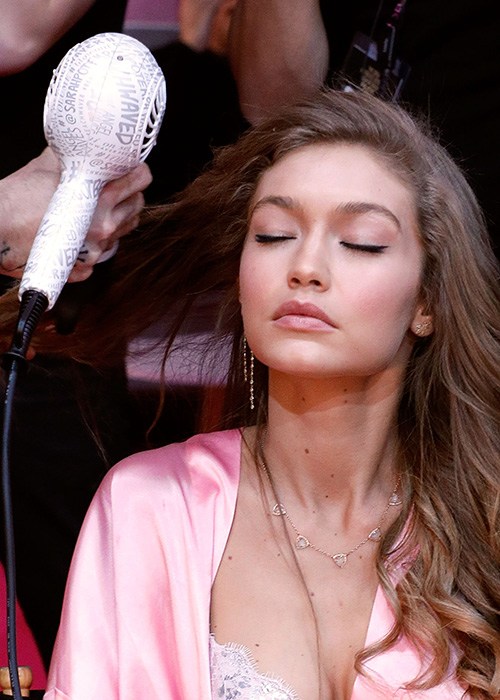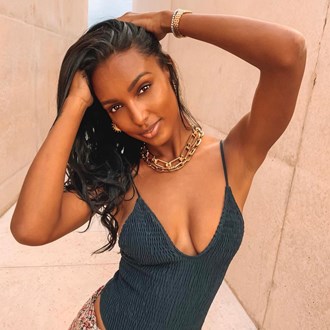What each setting on your hairdryer really does

How to get the most out of your hairdryer
How to get the most out of your hairdryer
It’s time to blow-dry your hair. You probably turn the settings on to max (both heat and speed) so you can get this show on the road as quickly as possible. But what if we were to tell you there’s a reason your hairdryer comes with more than one heat and airflow setting. And by not knowing the purpose of each one, you’re doing your hair and hairstyle a MAJOR disservice.
Most hairdryers have six options as standard. Three settings to control the speed at which air comes out (low, medium and high) and three settings for various heat temperatures (again, low, medium and high). Plus, many hairdryers these days come with an extra button that delivers a cool shot of air - a must, but more on that below.
Each setting plays a role in the result you’ll achieve, and comes with its own sets of dos, don’ts and warnings.
Here, we take you through when to use each setting on your hairdryer.
1
Low speed
Sure, it may feel like it takes longer to dry your hair when so little air is coming out, but you also have greater control. And, you’ll create less fly-aways. Remington’s Brand Ambassador, Stewart Foreman recommends the low airflow setting for fine, fragile hair or hair that’s weak from colour.
2
Medium speed
Best for medium to thick hair types, Foreman notes that it’s important not to “over-dry the hair as that creates frizz, so use a medium airflow when rough-drying hair”. A low to medium speed (as well as heat) setting is ideal for curly hair to keep curls intact and minimise frizz.
3
High speed
Cranking up the airflow on your hairdryer? Foreman advises only using this option on tough, resistant hair that you want to smooth out. When trying to speed up your drying process, a high-wattage hairdryer is your best bet (the higher the wattage, the faster the blow-dry). Plus, increasing your airstream rather than the temperature will reduce hair damage. Just keep in mind that the higher the airflow, the less control you have over the shape of your style.
4
High heat
Proceed with caution when using this heat setting, as it's often too hot for most hair and scalps. “Thicker hair can handle more heat,” shares Joey Scandizzo, leading hairstylist and founder of Eleven Australia. Foreman adds that a high heat suits thick hair because it’s better at holding moisture, so there’s less risk of drying your strands out. If you’re wanting to create a super-straight hairstyle, a high heat will “help stretch the hair out completely,” adds Scandizzo. Remember to keep your dryer moving along the hair to avoid overheating sections and ALWAYS use a heat protectant.
5
Medium heat
“A medium temperature is best for fine to medium hair,” says Foreman. “The medium temperature will ensure you don’t over-dry the hair and burn it.” Hairstylist and owner of his namesake brand, Kevin Murphy, says he likes to work with a medium heat at all times so he has more control when styling hair.
6
Low heat
If hair is fine, Scandizzo only ever uses a medium to low heat “so you can control the texture better and stop it from going fluffy”. Fine hair is more susceptible to heat damage because your strands are delicate and naturally weaker, which is why it’s important to get the heat setting right.
7
Cool shot
Once the hair is dry, Foreman recommends “going through with the cool heat to smooth down the hair cuticle to create maximum shine and smoothness.” Murphy explains, “heat allows hair to be mouldable, but cool air shuts the cuticle down and sets hair in place to help it last longer”.
Trying to master a sophisticated blow-dry? Read our beginner's guide to a polished blow-dry.
What heat and speed setting do you normally use? Do you adjust the settings based on your hair type and the style you're wanting to create?
Main image credit: Getty

Chelsea is BEAUTYcrew’s Contributing Editor. She has a sweet spot for anything that claims to make skin glow and won’t leave the house without a slick of mascara. Chelsea has 10 years of experience as a beauty editor and her words can be found on BEAUTYcrew, Women’s Health, Daily Addict, The Joye and Primped.







